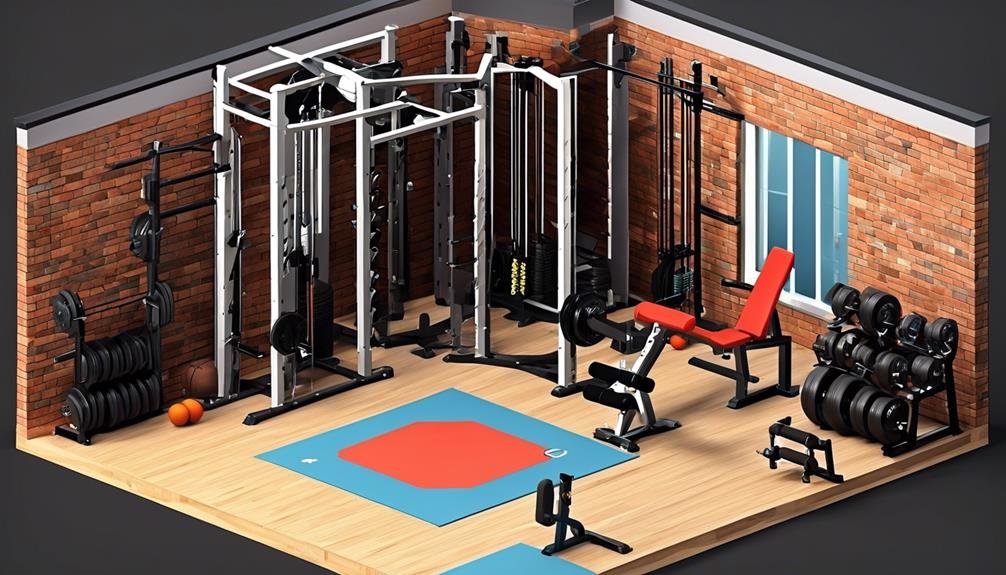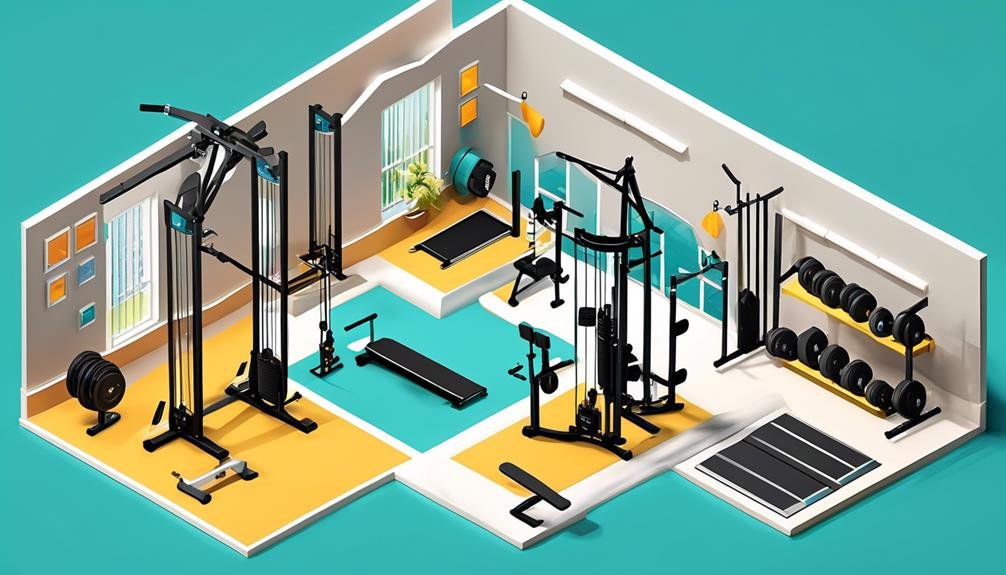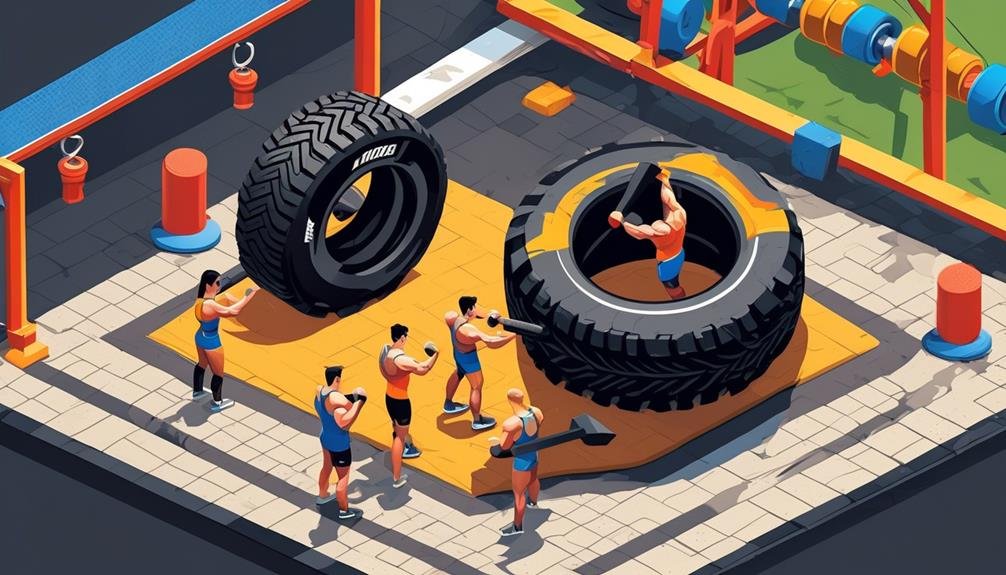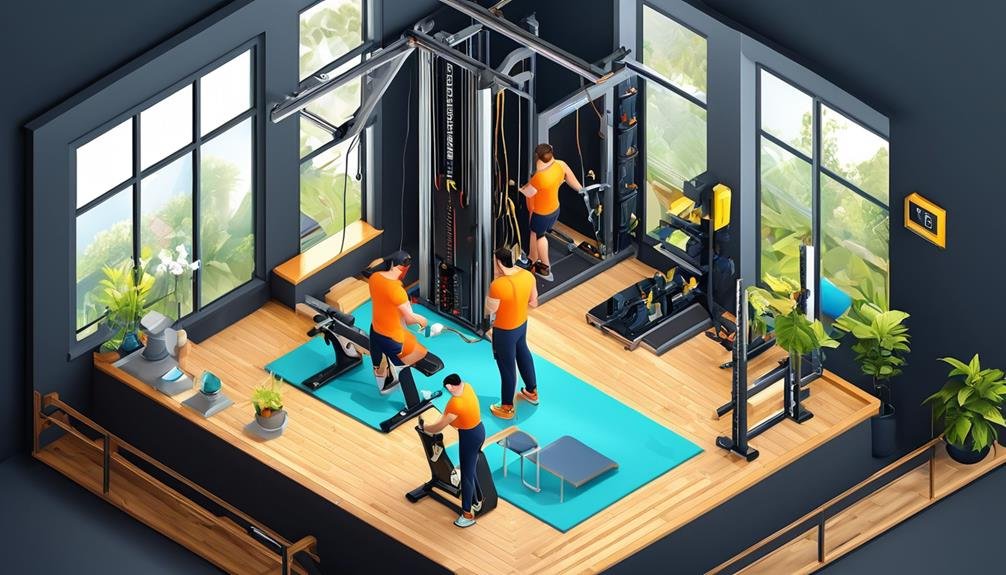When it comes to setting up your home gym, you want to make sure you have the right equipment that meets your needs and goals. That's why the decision between investing in a power cage or half rack is crucial.
Both options offer their advantages and disadvantages, and it's essential to weigh them carefully before making a choice. From space considerations to safety features, versatility, weight capacity, and budget, there are several factors to consider.
But don't worry, we're here to help you make an informed decision that will take your home workouts to the next level.
Key Takeaways
- Power cages offer a wider range of exercise options and attachments, while half racks are more compact and space-saving.
- Both power cages and half racks have safety features such as adjustable bars, spotter arms, and sturdy construction to prevent injuries during workouts.
- Power cages and half racks provide stability, but power cages may offer a higher level of stability due to their larger footprint and adjustable safety bars.
- Consider your budget and cost comparison when deciding between a power cage and a half rack, as power cages generally have a higher price range and may require additional costs for attachments, while half racks are more affordable but may require purchasing weight plates and barbells separately.
Space Considerations
When considering space limitations for your home gym, it's essential to carefully evaluate whether a power cage or half rack would be the best fit for your needs. Both options have their advantages and disadvantages, but understanding the space requirements can help you make an informed decision.
A power cage, also known as a squat rack, is a versatile piece of equipment that allows you to perform a wide range of exercises safely. It consists of four vertical posts with adjustable safety bars, providing support and stability during heavy lifts. However, power cages tend to take up more space due to their larger footprint. They require a dedicated area with enough clearance around the sides and top for unrestricted movement.
On the other hand, a half rack is a more compact alternative that offers many of the same benefits as a power cage. It typically has two vertical posts and lacks the safety bars found in a power cage. While it may not provide the same level of stability, a half rack can still accommodate most exercises while taking up less floor space.
Before making a decision, measure the available space in your home gym and consider any other equipment or furniture that may be present. Ensure that you have enough room to move comfortably and perform exercises without any restrictions. Additionally, take into account your future fitness goals and the potential for expanding your equipment collection.
Safety Features
To ensure your safety during workouts, both power cages and half racks offer a variety of essential features. Here are four safety features to consider:
- Safety Bars: Both power cages and half racks come equipped with safety bars. These adjustable bars act as a safety net, catching the weight if you're unable to complete a lift. They provide a crucial backup system that protects you from injury by preventing the barbell from falling on you.
- Spotter Arms: Spotter arms are another essential safety feature. These sturdy metal arms attach to the power cage or half rack and provide additional support during heavy lifts. They can be adjusted to the appropriate height and are there to catch the weight if you fail to complete a rep.
- Solid Construction: Both power cages and half racks are built with strong and durable materials to ensure stability and safety during workouts. Look for models made of heavy-duty steel that can withstand the weight you plan to lift.
- Safety Pins and J-Hooks: These attachments are used to secure the barbell in place. Safety pins are adjustable and can be set at various heights to catch the barbell if you lose control. J-hooks, on the other hand, hold the barbell in place during lifts, reducing the risk of it slipping or falling.
With these safety features, both power cages and half racks provide a secure environment for your workouts, giving you the peace of mind to focus on your training.
Versatility and Exercise Options
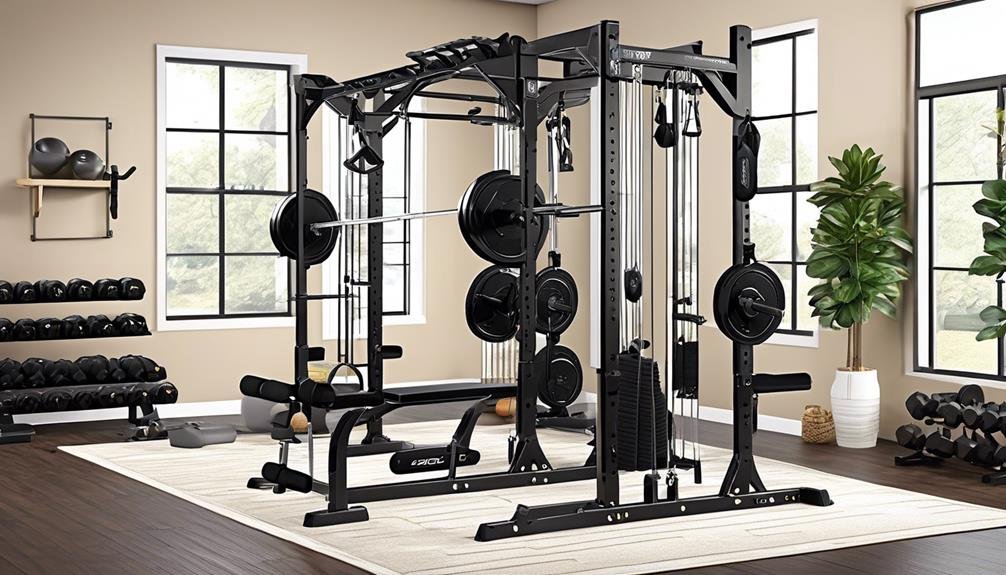
Are you looking for home gym equipment that offers a wide range of exercise options and versatility for your workouts? Both a power cage and a half rack can provide you with the flexibility you need to target different muscle groups and perform various exercises.
A power cage typically comes with adjustable safety bars, which allow you to perform exercises such as squats, bench presses, and shoulder presses safely. It also often includes a pull-up bar, enabling you to work on your upper body strength. Additionally, some power cages come with attachments like dip bars and cable pulley systems, expanding your exercise options even further.
On the other hand, a half rack is a more compact option that takes up less space. It also provides adjustable safety bars for exercises like squats and bench presses, along with a pull-up bar. However, it may not offer the same level of versatility as a power cage, as it lacks additional attachments.
Ultimately, the choice between a power cage and a half rack depends on your specific fitness goals and the variety of exercises you want to incorporate into your workouts. Consider the exercises you enjoy and the muscle groups you want to target, as well as the space available in your home gym.
Weight Capacity and Stability
If you're considering the weight capacity and stability of a power cage or half rack for your home gym, it's important to evaluate their design and construction. The weight capacity refers to the maximum amount of weight the equipment can safely hold, while stability ensures that the rack or cage stays securely in place during your workouts.
Here are some key factors to consider when assessing the weight capacity and stability of these gym essentials:
- Construction materials: Look for racks and cages made from high-quality steel, as this material offers durability and sturdiness. Avoid racks or cages that use flimsy materials, as they may not be able to support heavier weights.
- Frame design: Opt for a power cage or half rack with a solid, welded frame design. This type of construction provides better stability and prevents wobbling or tipping during intense workouts.
- Base support: Check if the rack or cage comes with a wide base or additional support bars. These features help distribute the weight more evenly, enhancing stability and reducing the risk of accidents.
- Weight capacity rating: Pay attention to the weight capacity rating of the equipment. Ensure that it exceeds your current lifting capacity and allows for future progression.
Budget and Cost Comparison
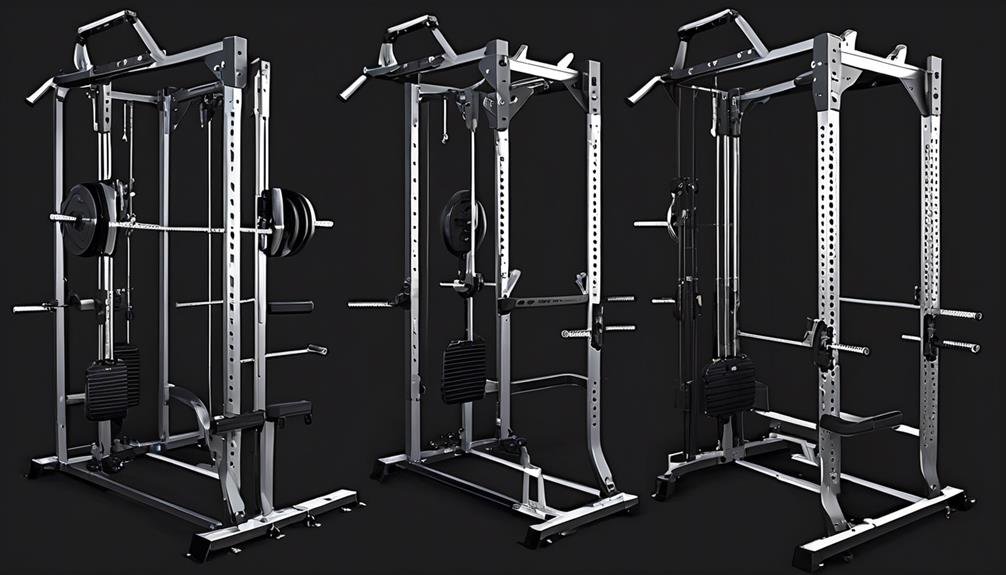
When considering your budget and comparing costs, it's important to weigh the features and quality of power cages and half racks for your home gym. Both options have their advantages and drawbacks, and understanding how they align with your fitness goals and financial constraints will help you make an informed decision.
To give you a clearer picture, let's compare the budget and cost aspects of power cages and half racks:
| Aspect | Power Cage | Half Rack |
|---|---|---|
| Price Range | $300 – $1500 | $200 – $1000 |
| Features | Safety bars, multiple attachments, weight plate storage | Safety spotters, pull-up bars, adjustable J-hooks |
| Quality | Sturdy construction, solid frame, durable materials | Stable structure, reliable safety mechanisms |
| Additional Costs | Attachments and accessories | Weight plates, barbells |
As you can see, power cages generally have a higher price range compared to half racks. This is due to the additional features they offer, such as safety bars and weight plate storage. However, half racks are still a cost-effective option, providing stability and essential features like safety spotters and pull-up bars.
When deciding on your budget, consider your specific fitness needs and financial situation. If you require a wider range of exercises and attachments, a power cage might be worth the investment. However, if you're looking for a more affordable option without compromising on safety and functionality, a half rack could be the better choice. Ultimately, the decision should be based on your goals, preferences, and budgetary considerations.
Frequently Asked Questions
How Long Does It Typically Take to Assemble a Power Cage or Half Rack for a Home Gym?
Assembling a power cage or half rack for your home gym typically takes about 1-2 hours. It's important to carefully follow the instructions provided and have the necessary tools ready for a smooth and efficient setup.
Can a Power Cage or Half Rack Be Used for Exercises Other Than Weightlifting, Such as Bodyweight Exercises or Suspension Training?
Yes, both a power cage and a half rack can be used for exercises other than weightlifting. They provide stability and safety for bodyweight exercises and can be used for suspension training as well.
Are There Any Additional Accessories or Attachments That Can Be Purchased for a Power Cage or Half Rack to Expand Its Exercise Options?
There are various additional accessories and attachments available for both power cages and half racks that can significantly expand your exercise options. These include dip bars, pull-up bars, landmine attachments, and more.
Can a Power Cage or Half Rack Be Used by Multiple People With Different Fitness Levels and Heights?
A power cage or half rack can be used by multiple people with different fitness levels and heights. Both options provide adjustable safety bars and J-hooks, allowing for customization and versatility in workouts.
Are There Any Maintenance or Cleaning Requirements for a Power Cage or Half Rack to Ensure Its Durability and Longevity?
To ensure the durability and longevity of your power cage or half rack, regular maintenance and cleaning are necessary. This includes wiping down the equipment after each use, checking for loose bolts, and lubricating moving parts as needed.
Conclusion
In conclusion, whether you choose to invest in a power cage or a half rack for your home gym ultimately depends on your specific needs and preferences.
Consider the available space in your home, the safety features offered by each option, the versatility and exercise options they provide, as well as their weight capacity and stability.
Additionally, make sure to compare the budget and cost of both options before making a decision.
Ultimately, choose the equipment that best suits your fitness goals and budget.
